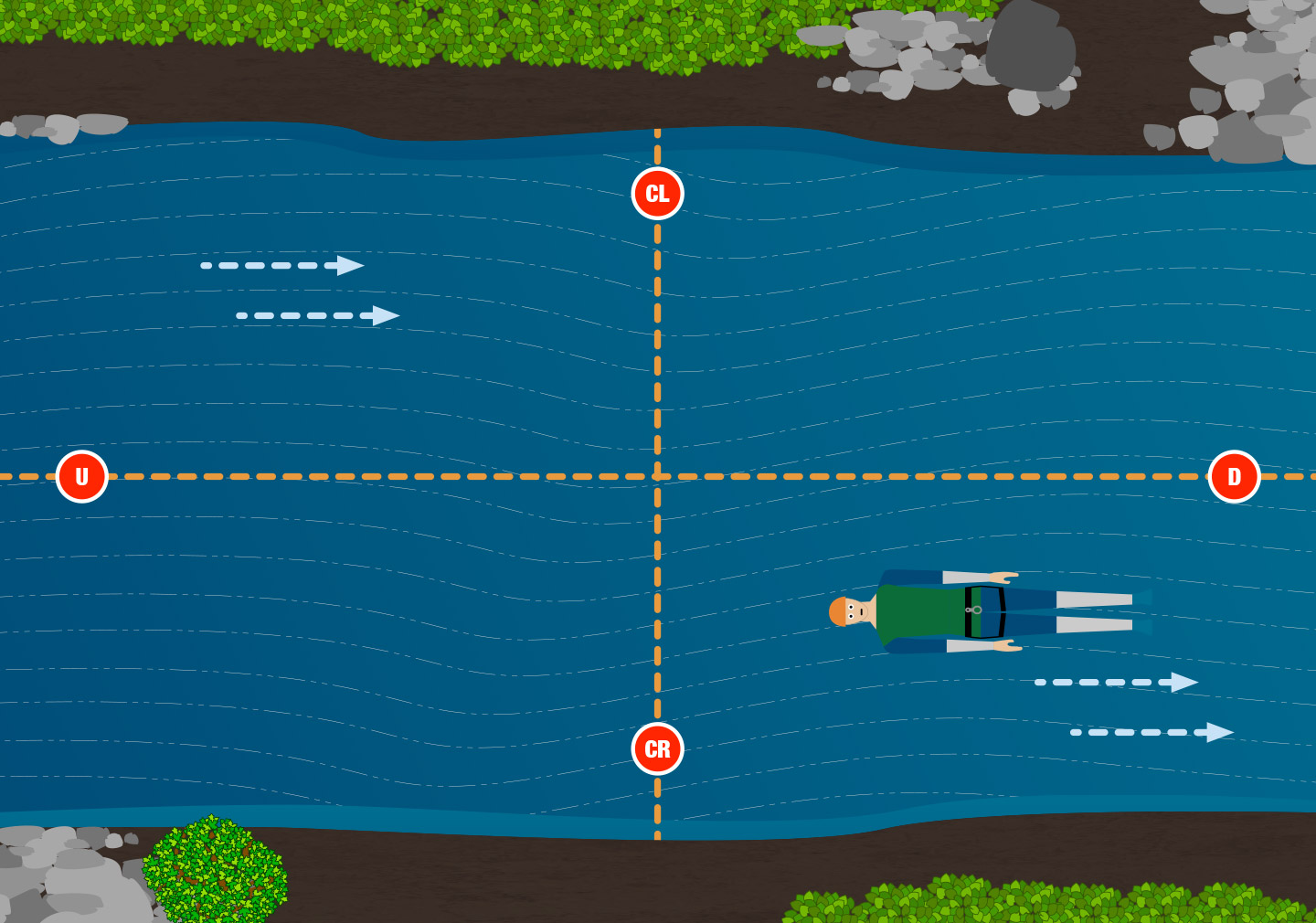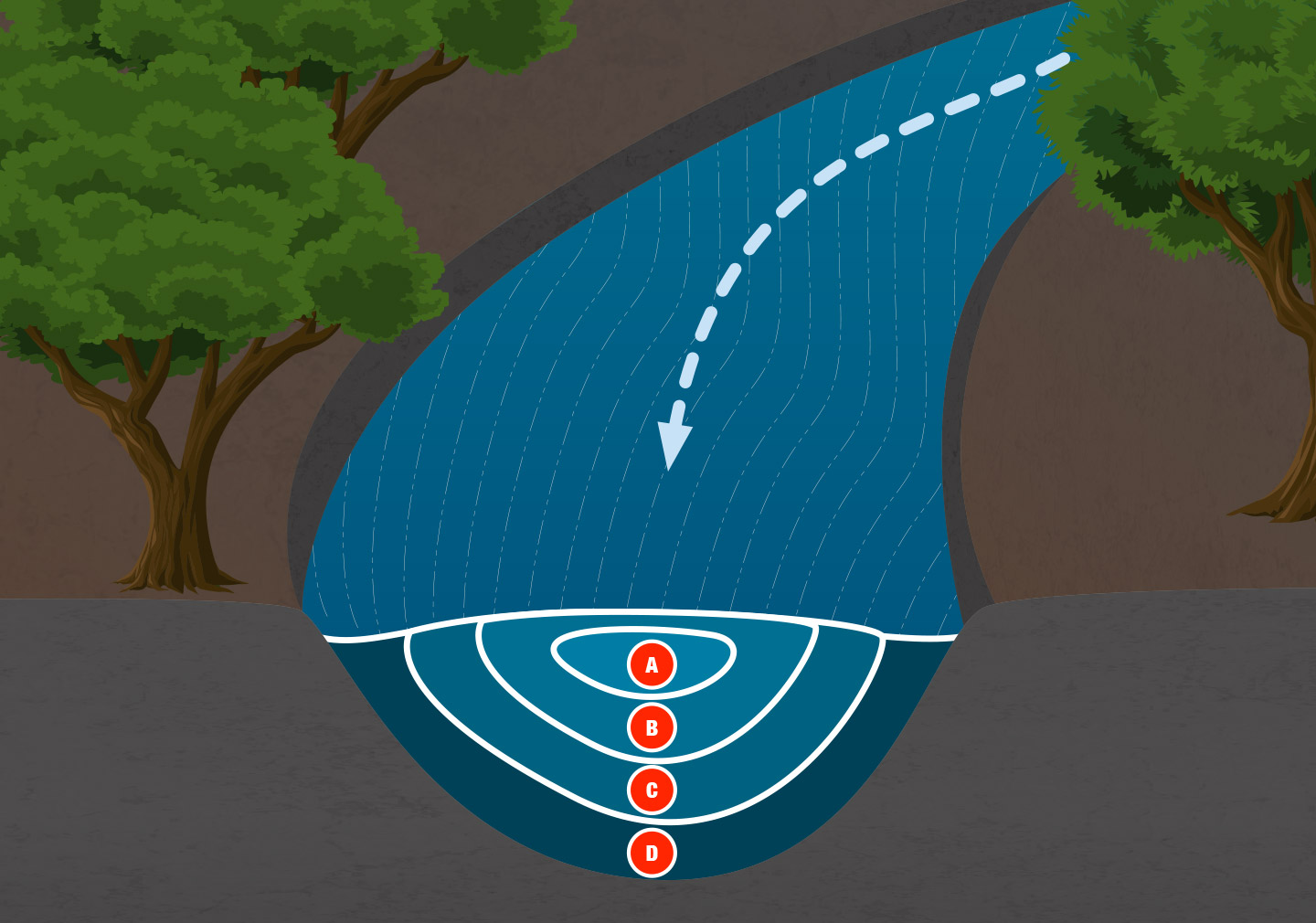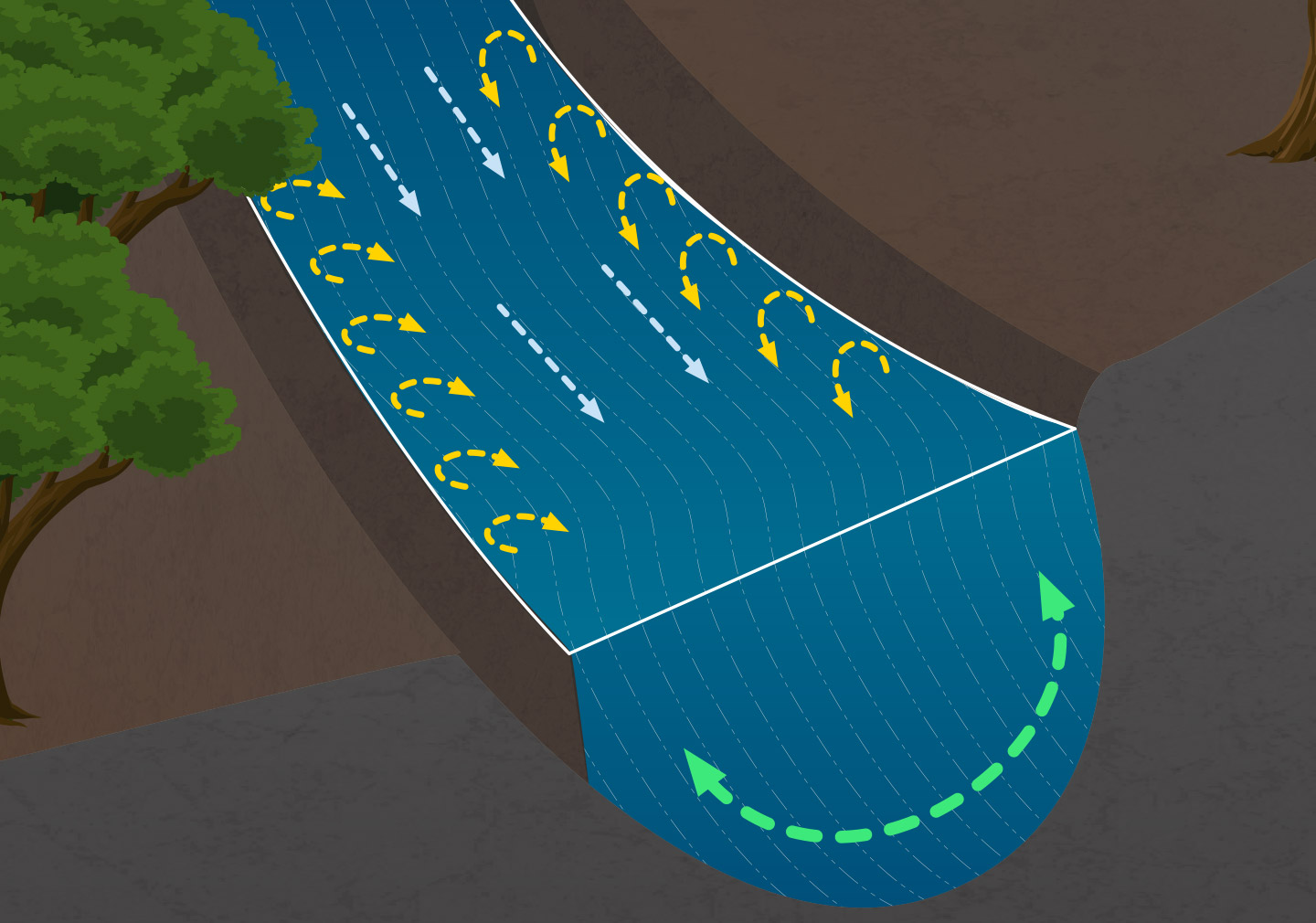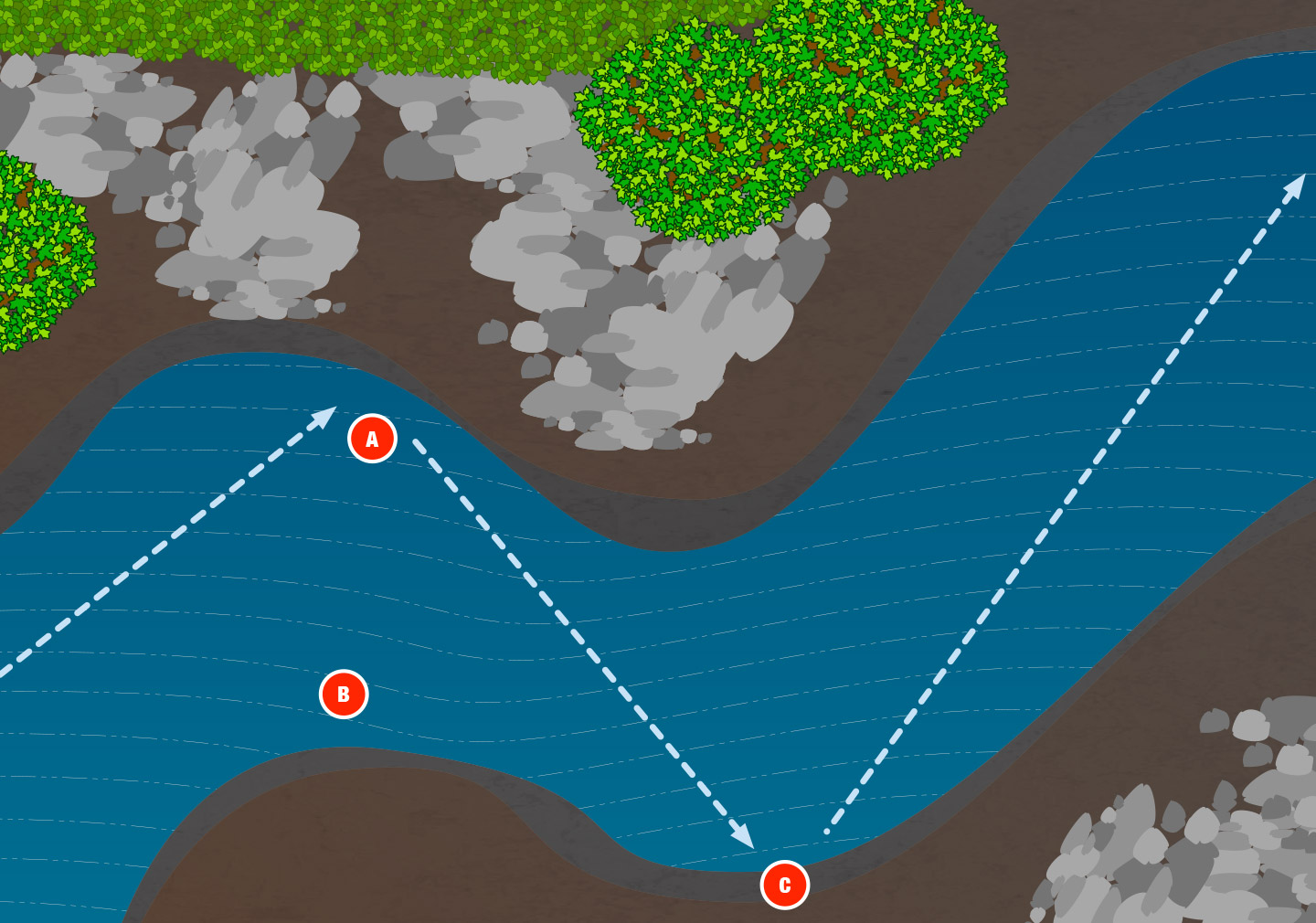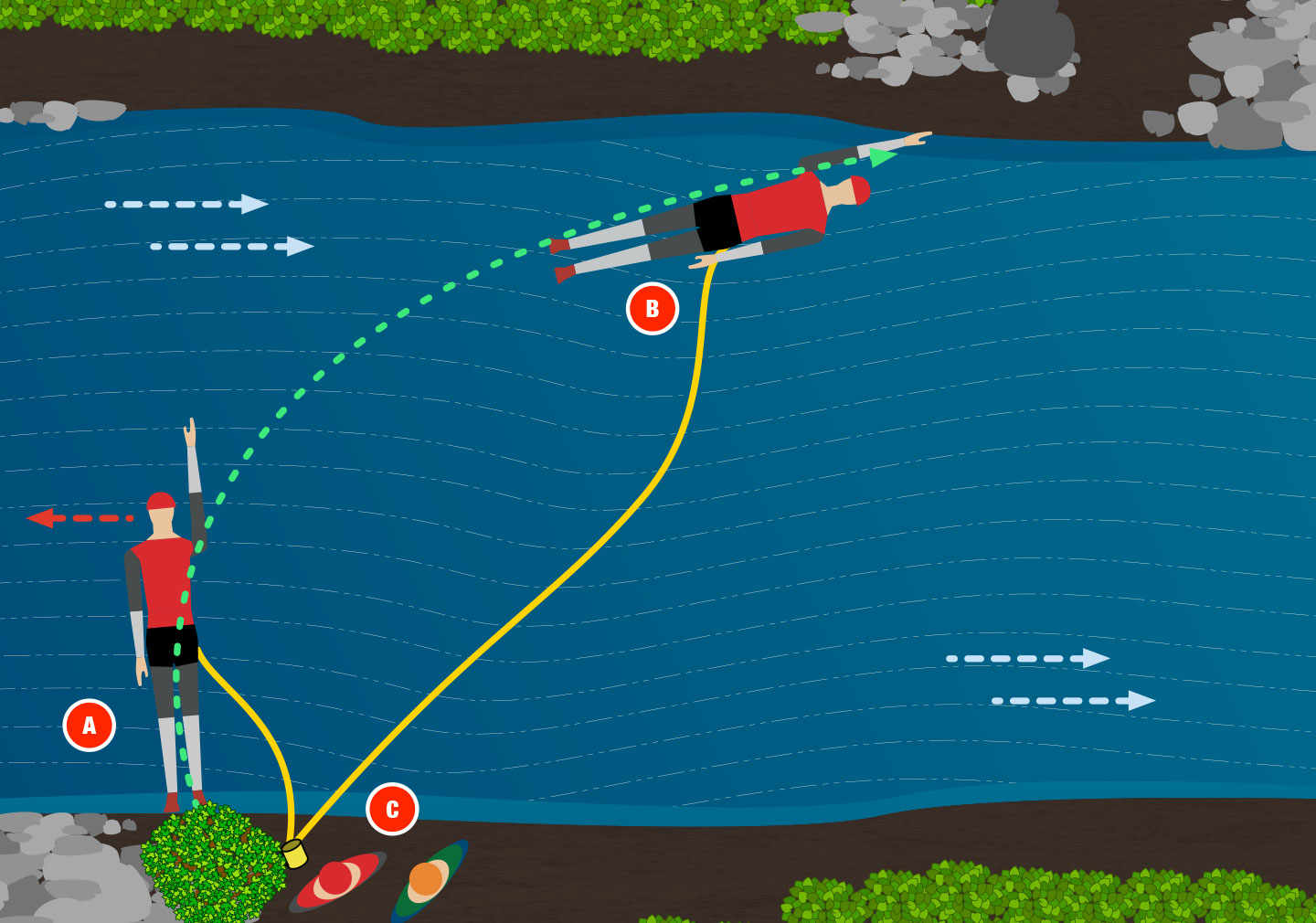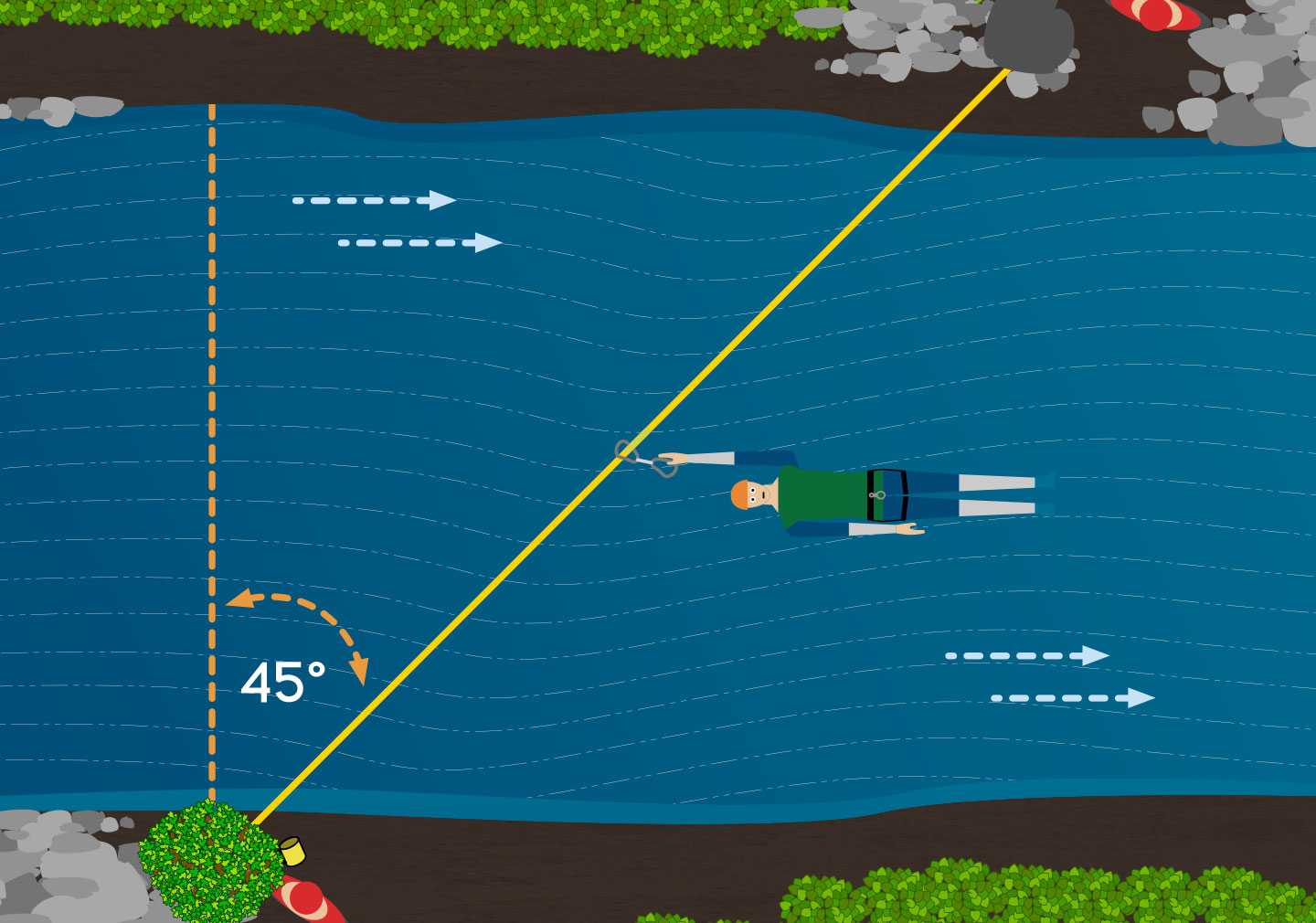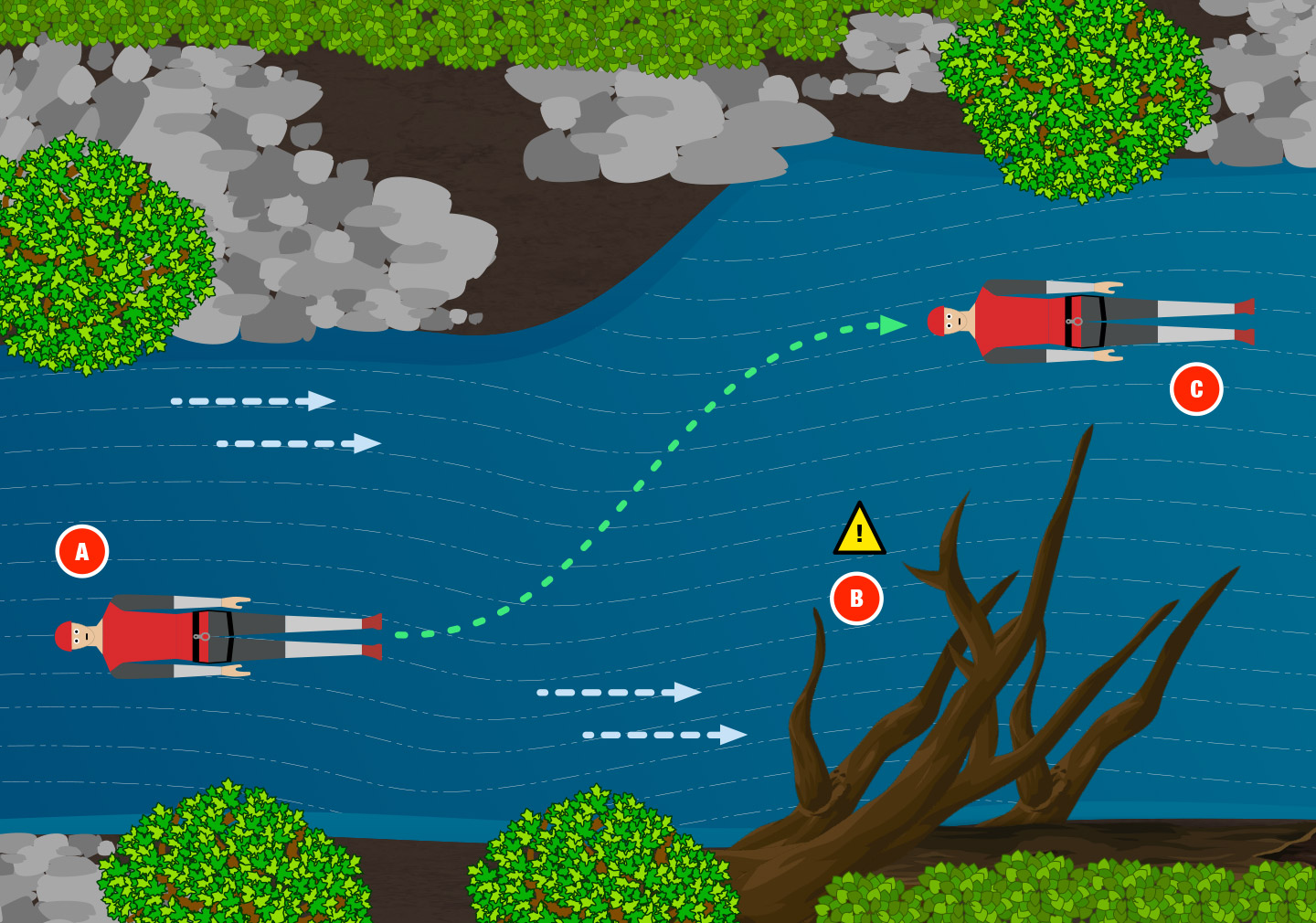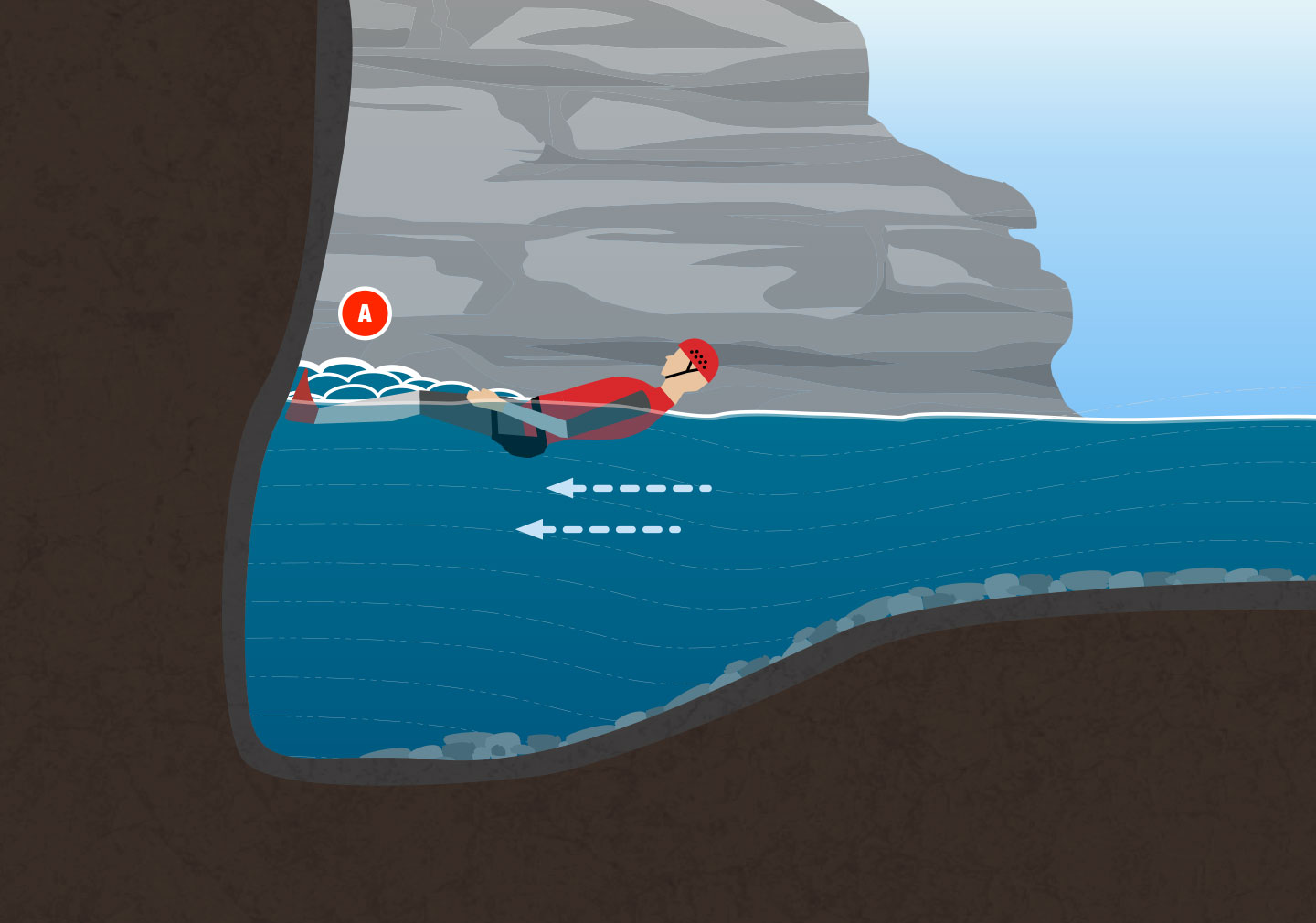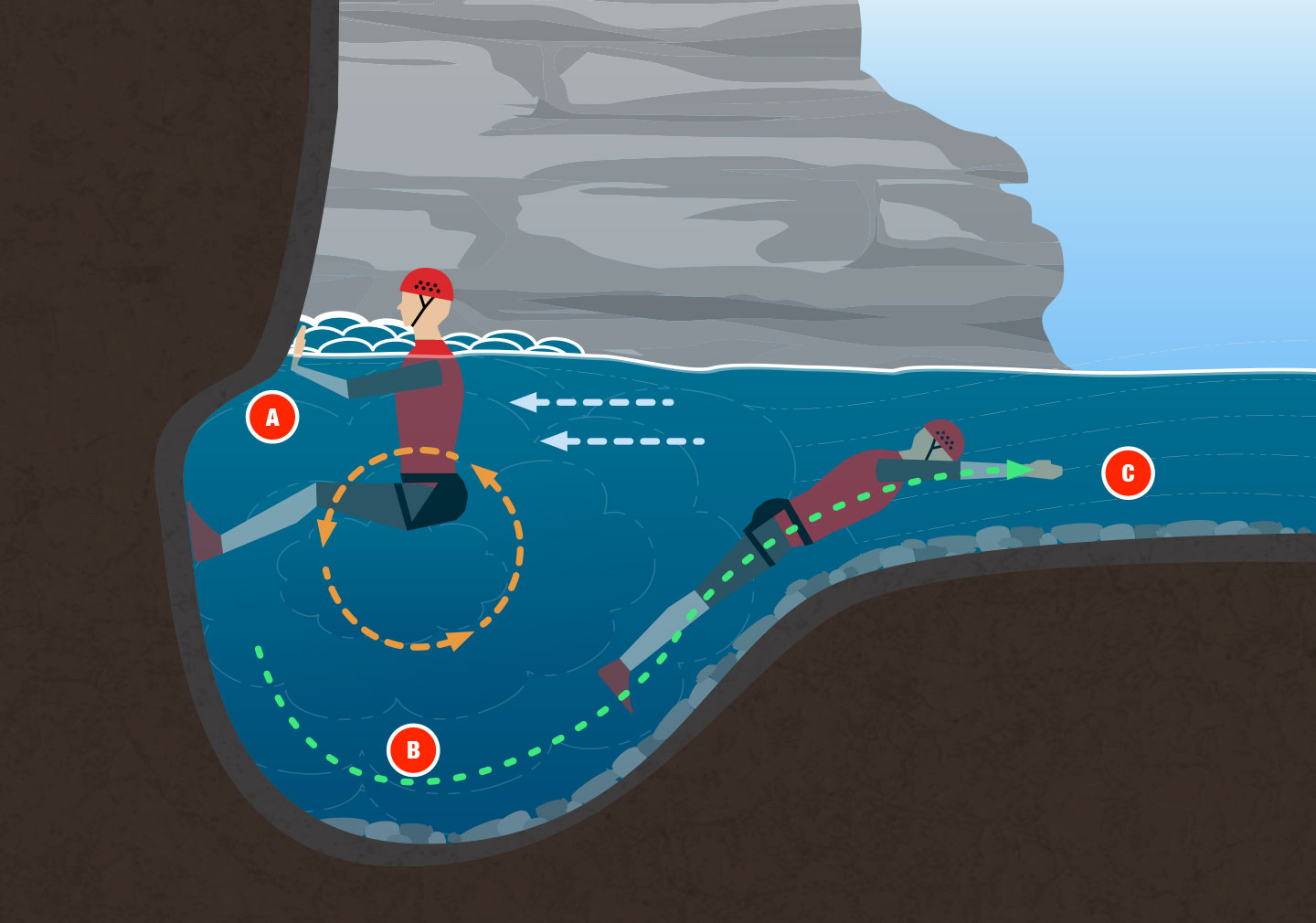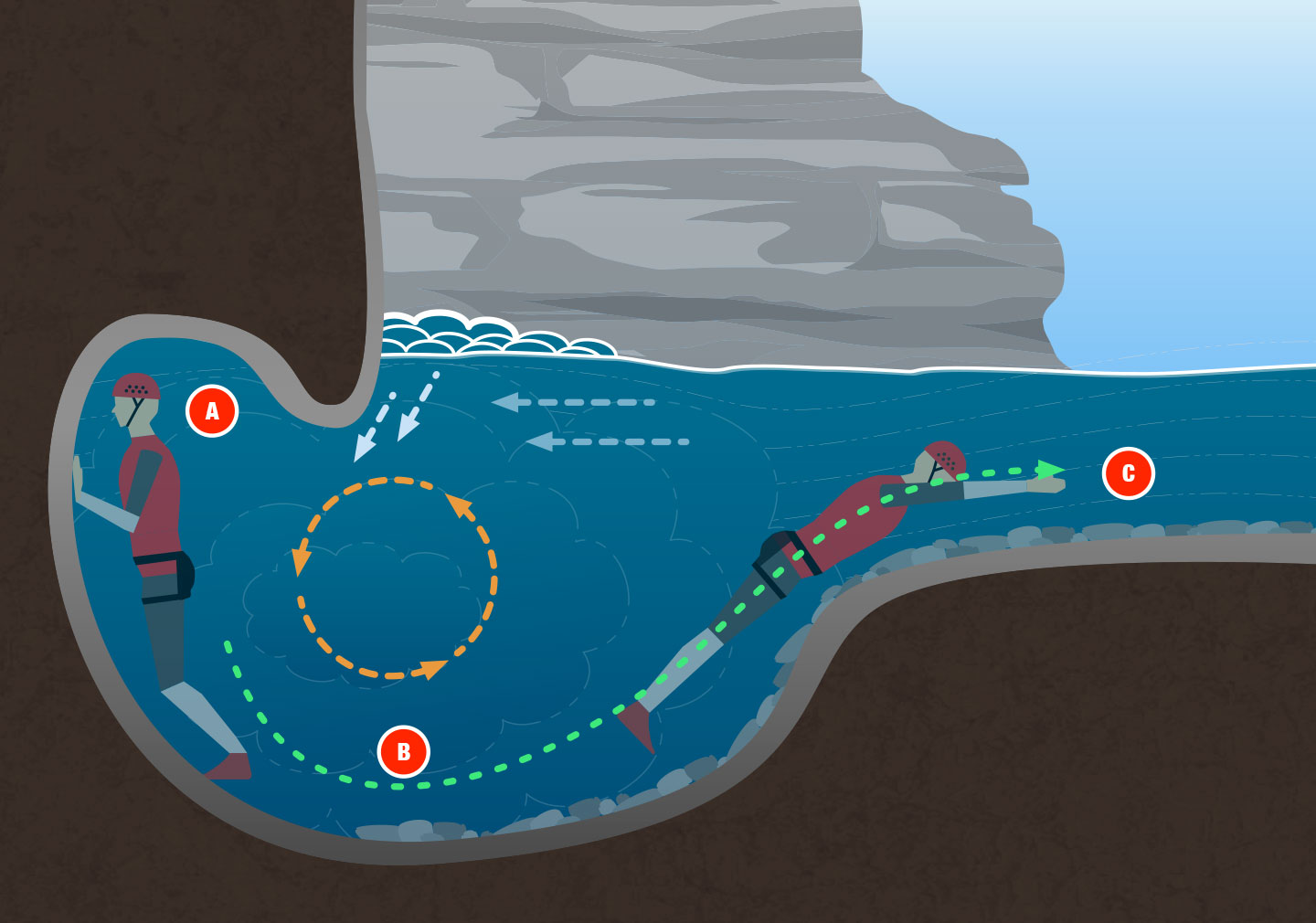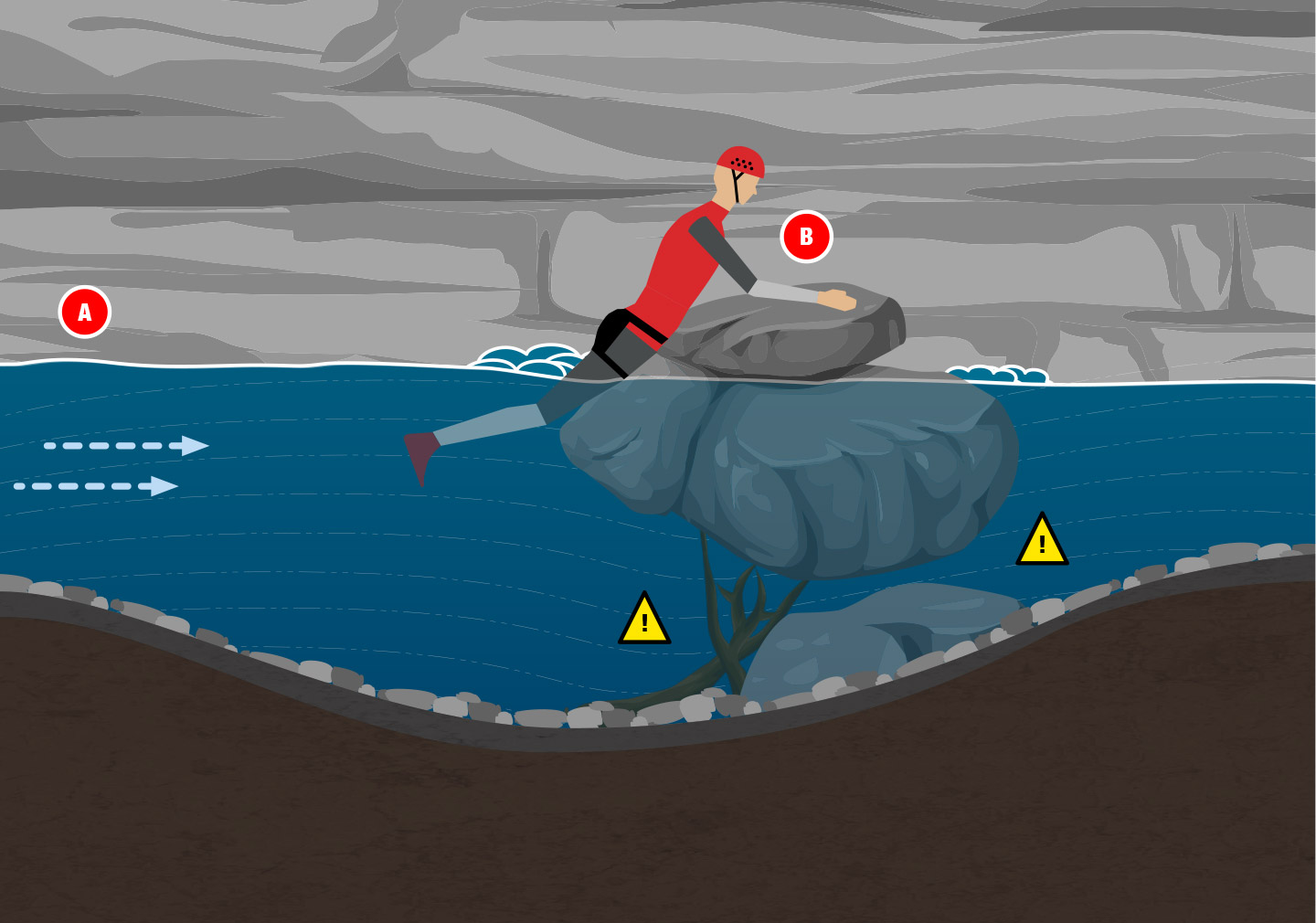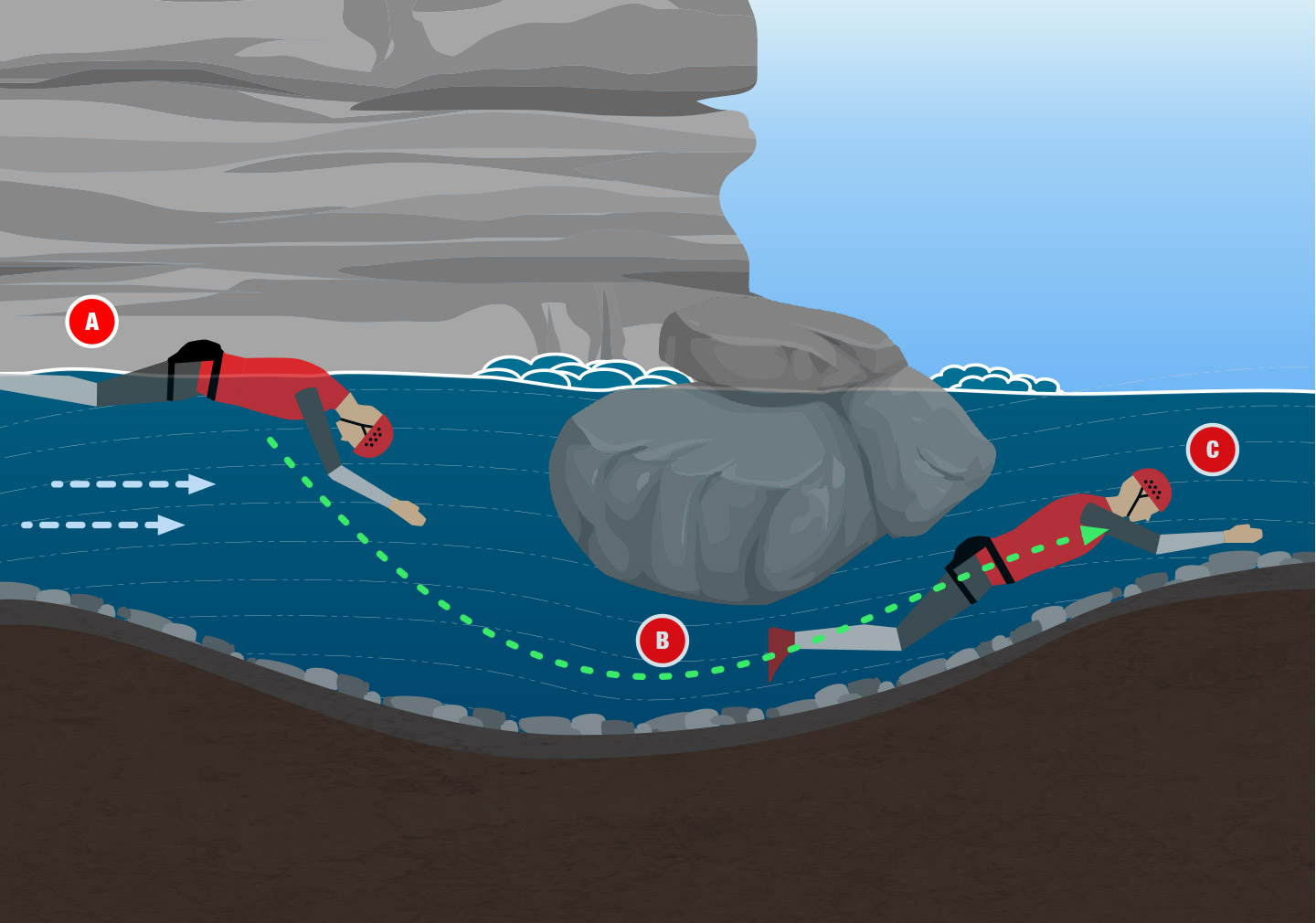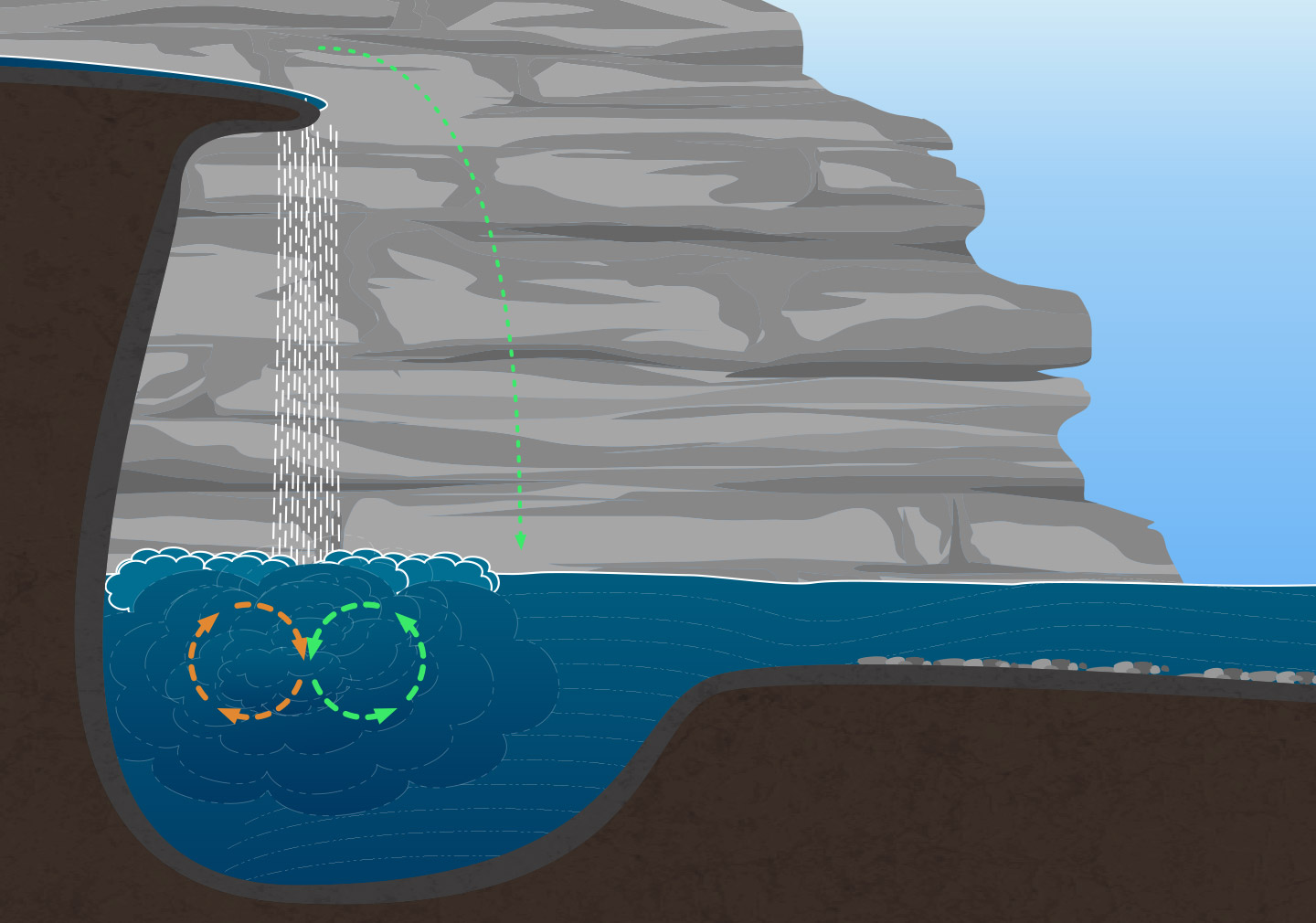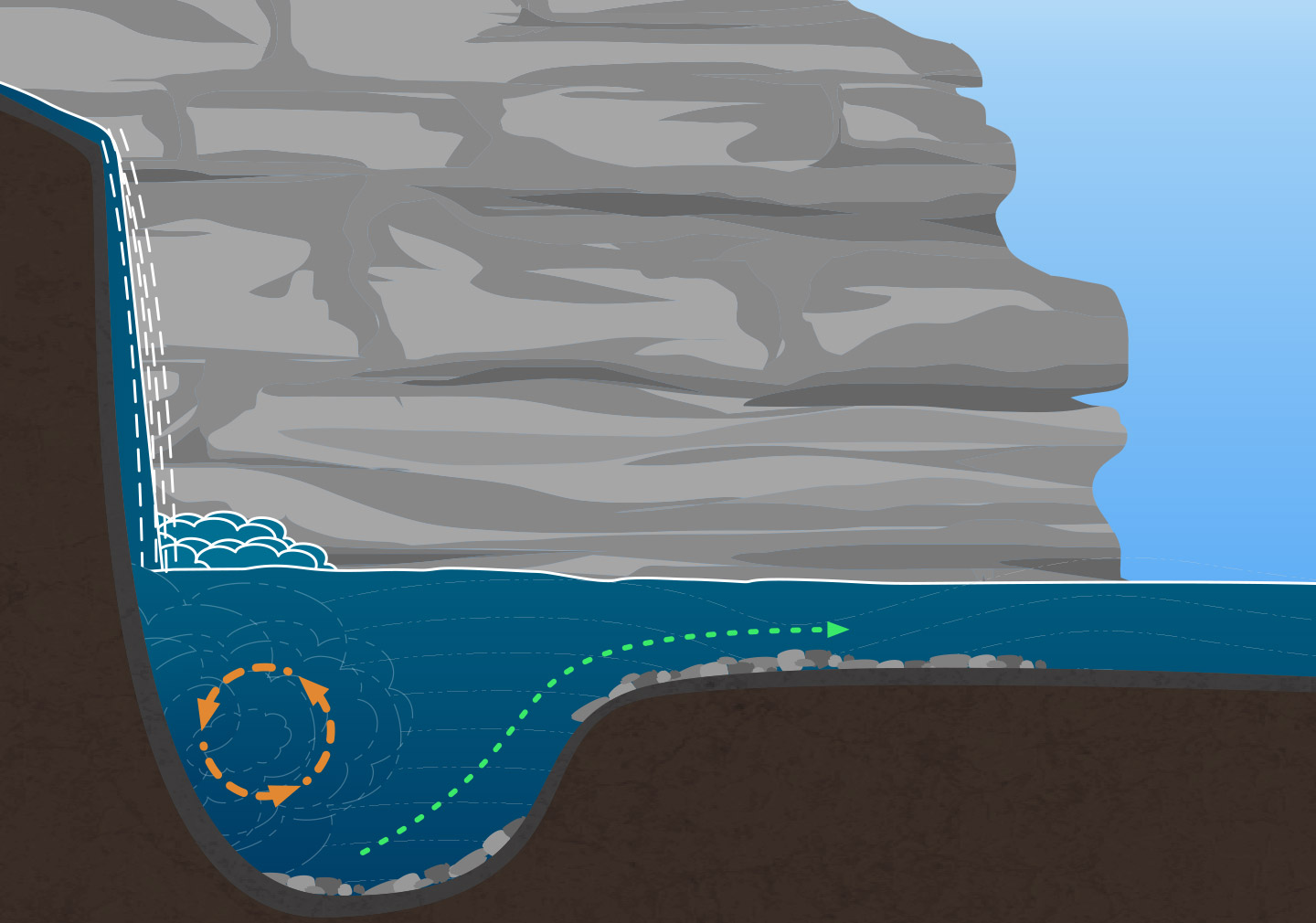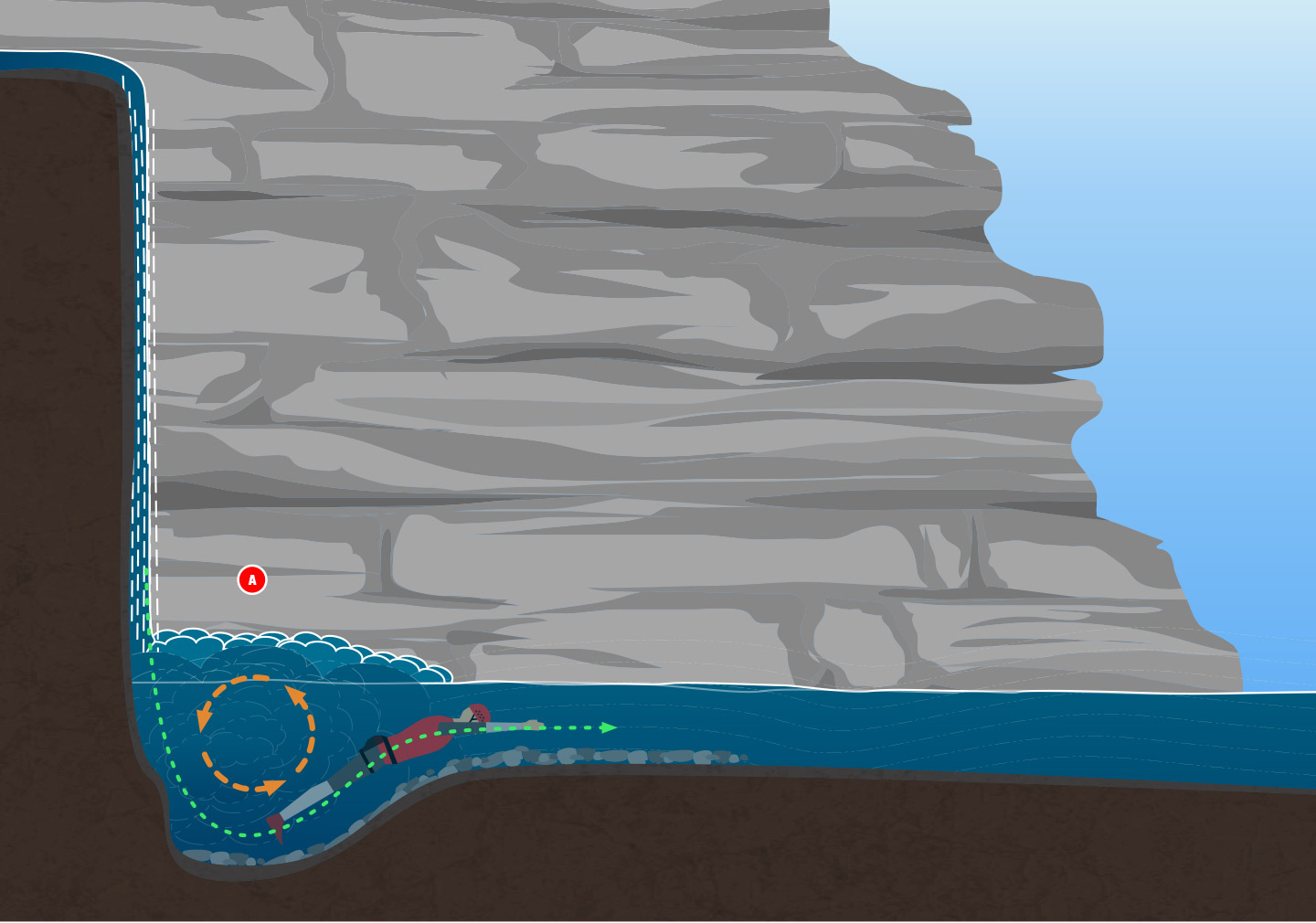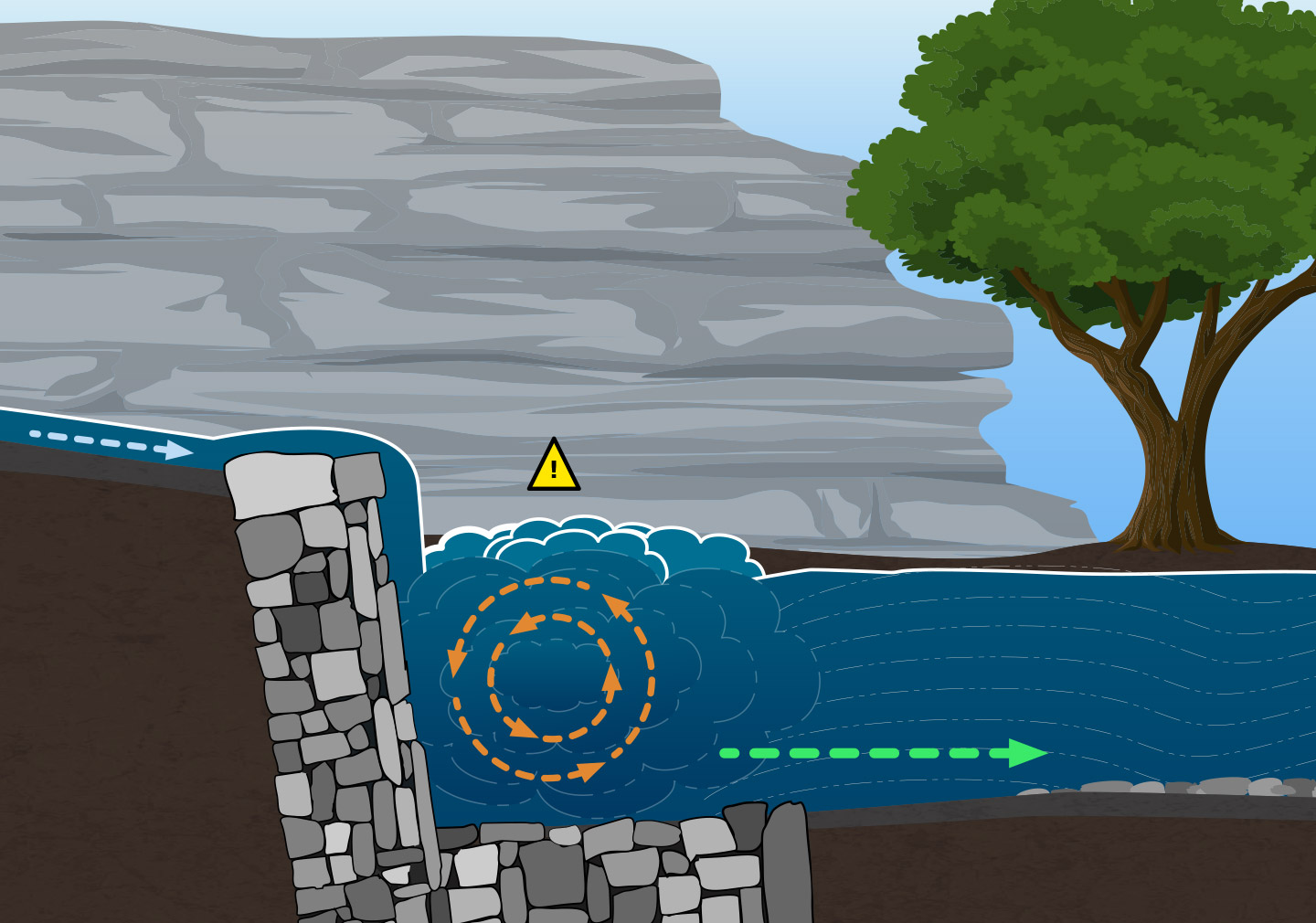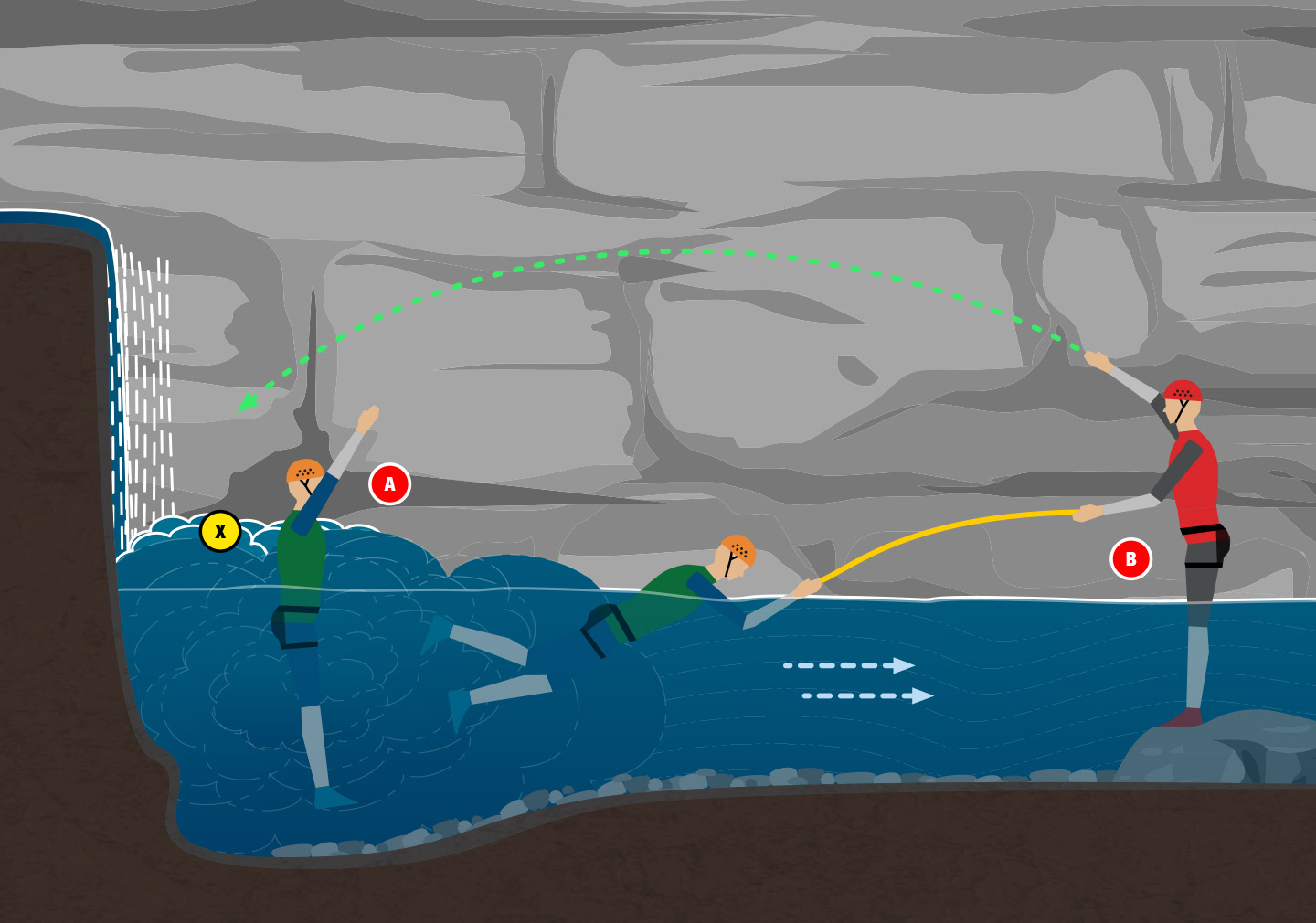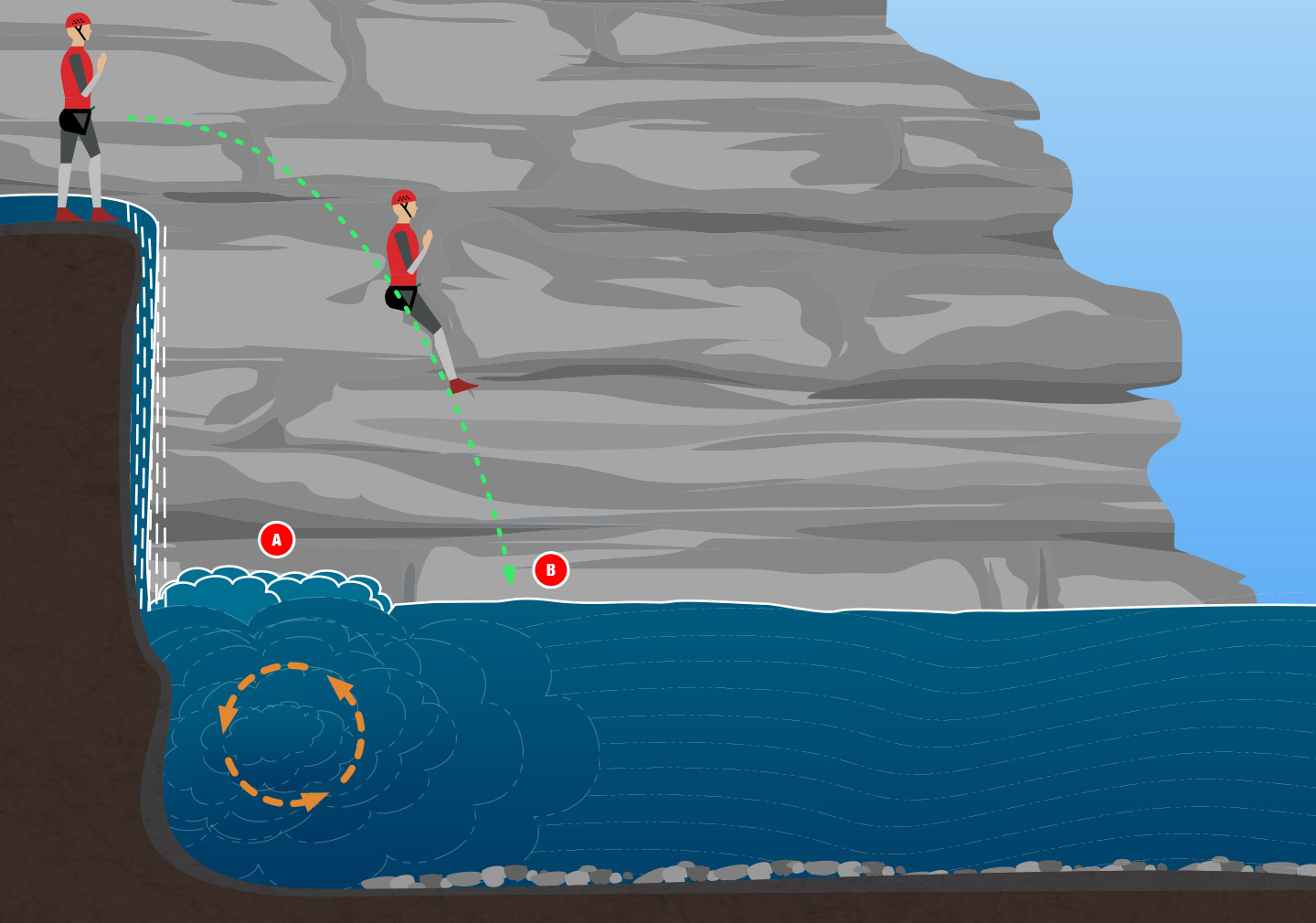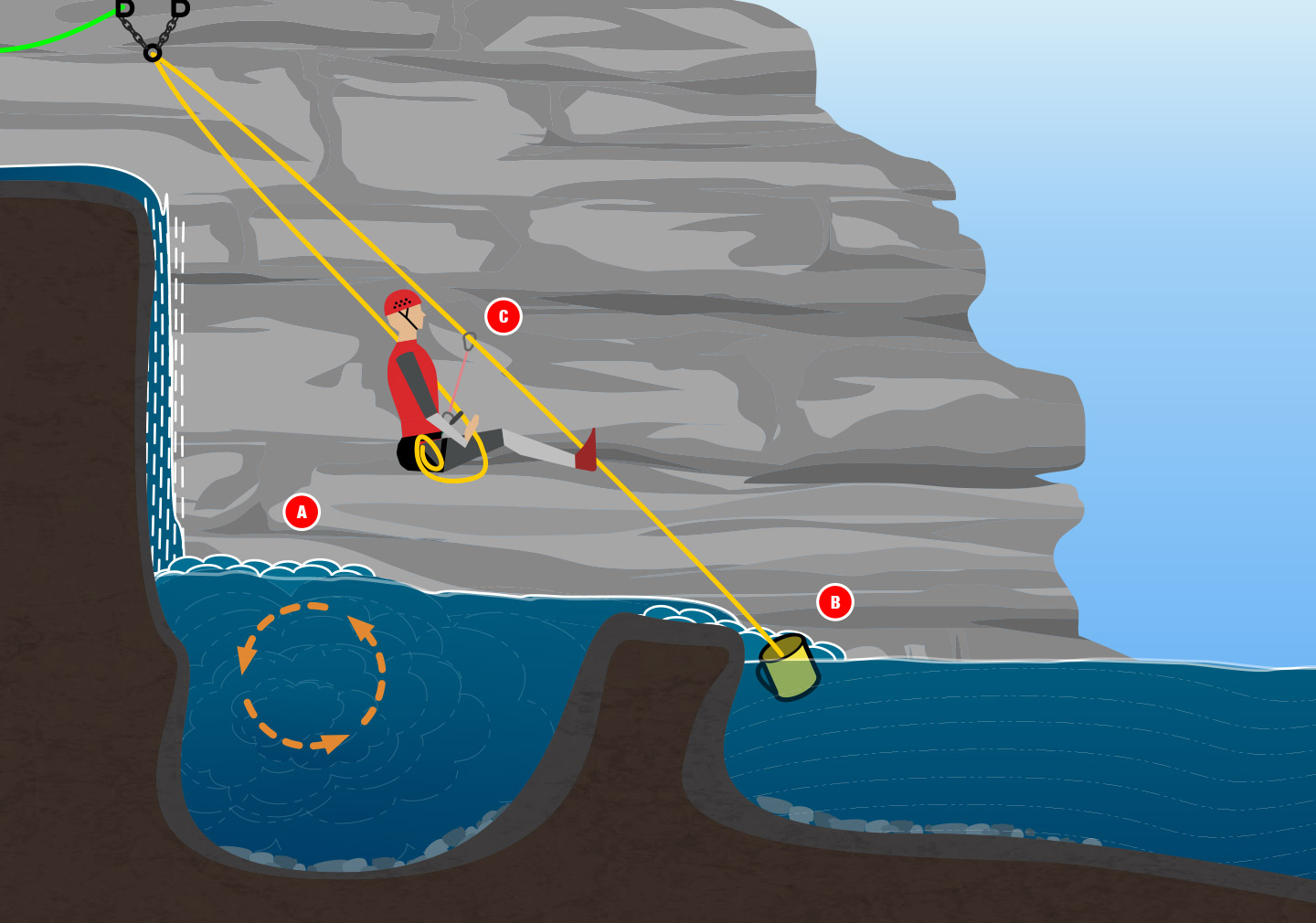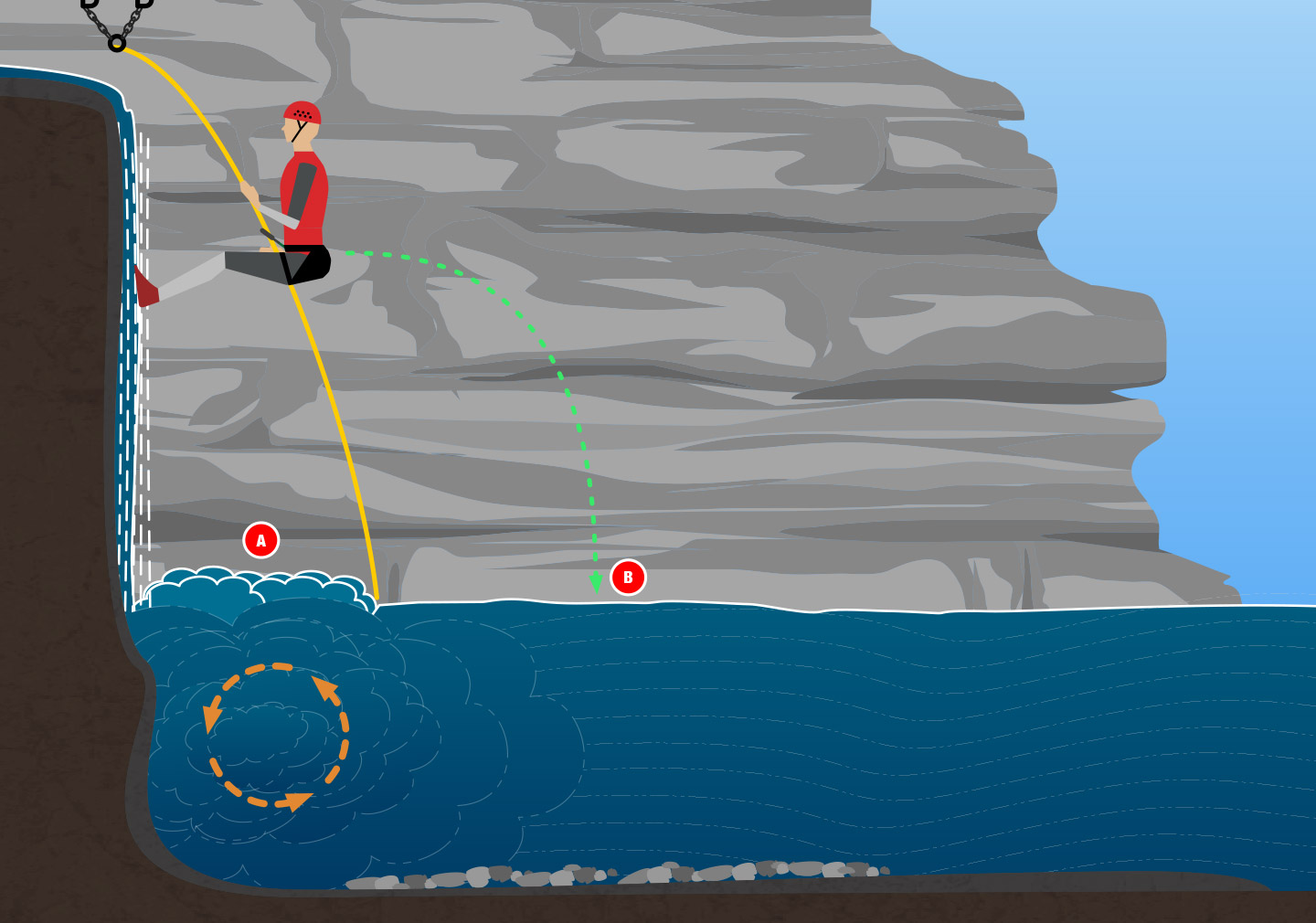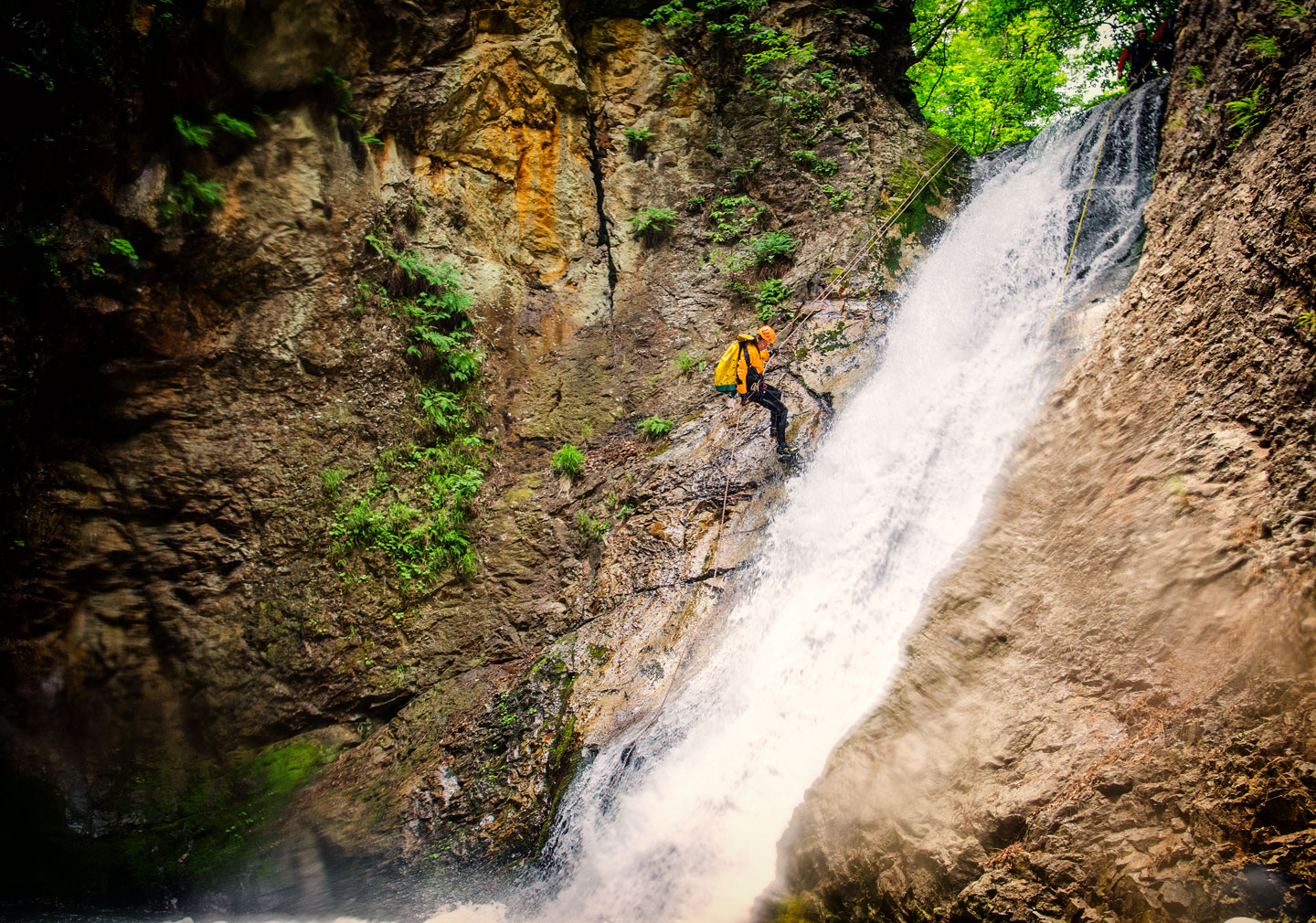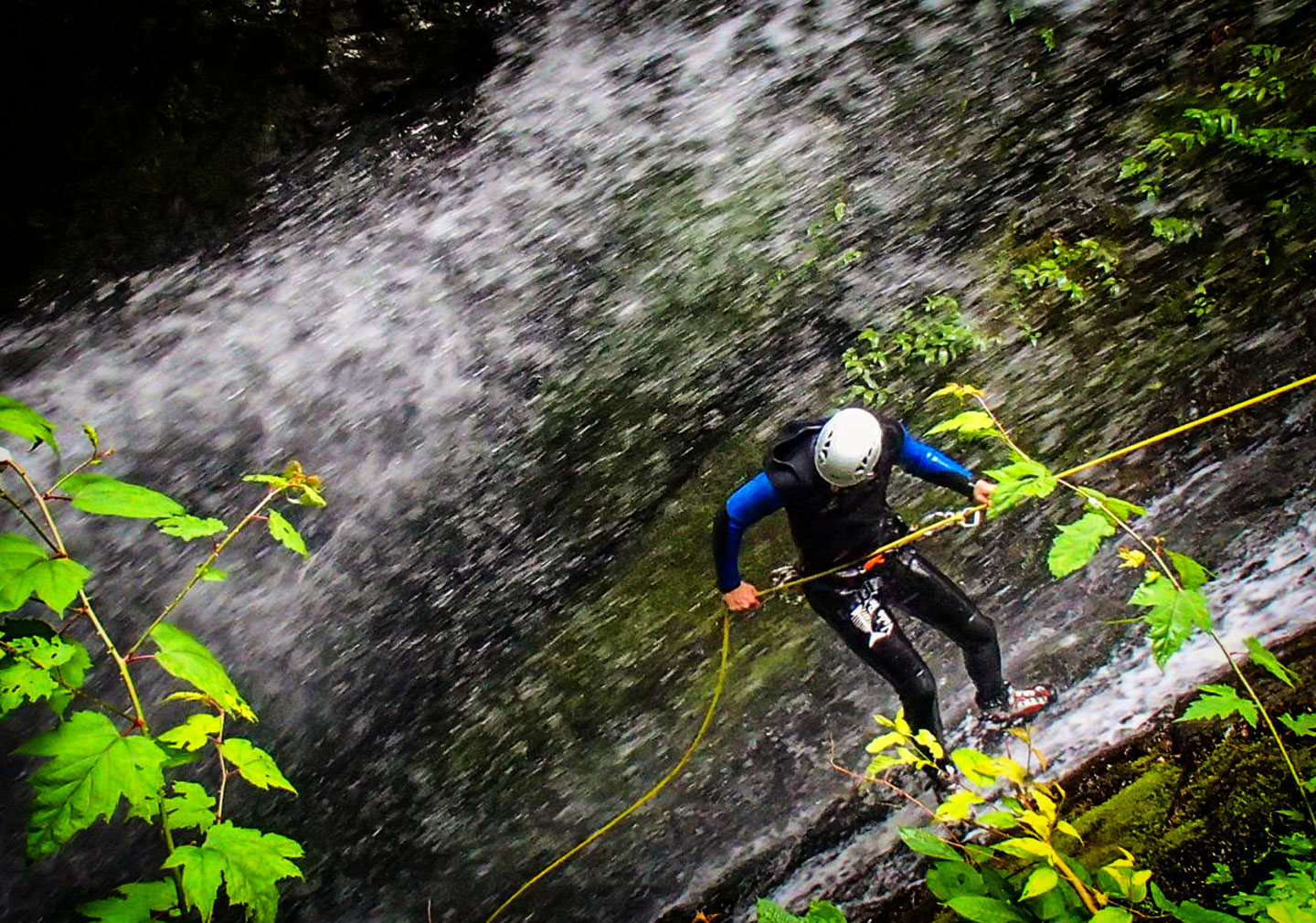Characteristics
The nature of rivers in a canyon are variable and are determined by five main factors. Understanding how moving water behaves, you can use the canyon river to ascertain a level of risk management and avoid unnecessary or unacceptable levels of danger.
Topography
Topography is generally consistent over time. Increased flow, as during a flood or high rainfall season can make permanent changes to the streambed by displacing rocks and boulders, by deposition of dirt, sand or stones or by creating new channels for flowing water.
Gradient
The gradient of a river is the rate at which it loses elevation along its course. This loss determines the river’s slope, and to a large extent its rate of flow. Shallow gradients produce gentle, slow rivers while steep gradients are associated with more forceful flows.
Constrictions
Constrictions can form a water hazard where the river’s flow is forced into a narrower channel. This pressure causes the water to flow more rapidly and to react differently to the river bed.
Obstructions
A boulder or ledge in the middle of a river or near the side can obstruct the flow of the river, and can also create a “pillow”, when water flows backwards upstream of the obstruction, or a “pour over” (over the boulder), and “hydraulics” or “holes” where the river flows back on itself—perhaps back under the drop,often with fearful results for those caught in its grasp.
Water Flow
Measuring water flow is an important aspect for canyoners. A marked increase or decrease in flow can create a hazard or make safe passage through previously navigated rapids more difficult or impossible. Flow rate is measured in either Cubic Meters per Second (m³/s) or Cubic Feet per Second (cfs) depending on the country.
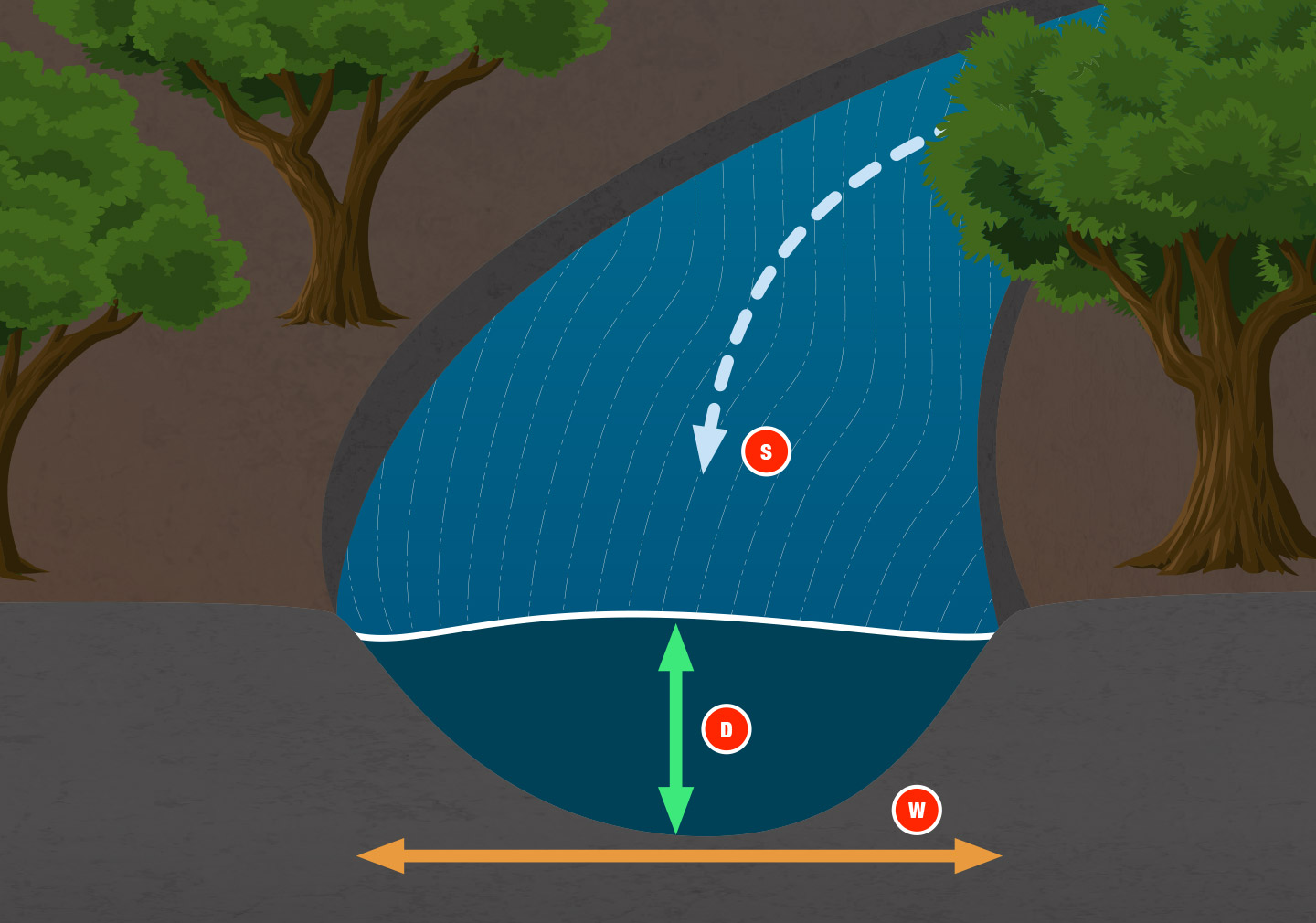
D Depth x W Width x S Speed = Volume
By knowing the measurements of the river at a given spot, it is possible to calculate its flow volume at any point between confluences.
Note: Always keep a lookout on the water flow before, during and after the canyon. Being able to judge the speed and volume maybe able to help make a informed decision on escaping incase the flow increases.
